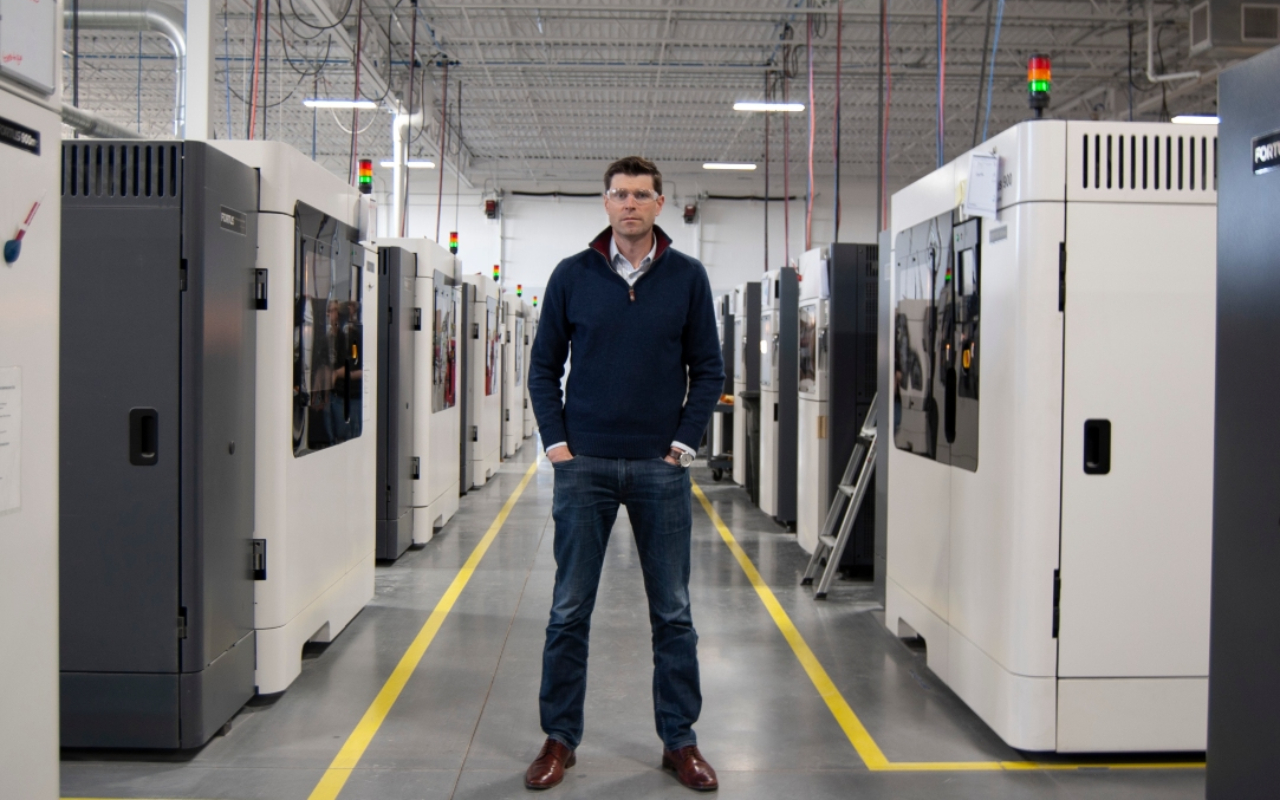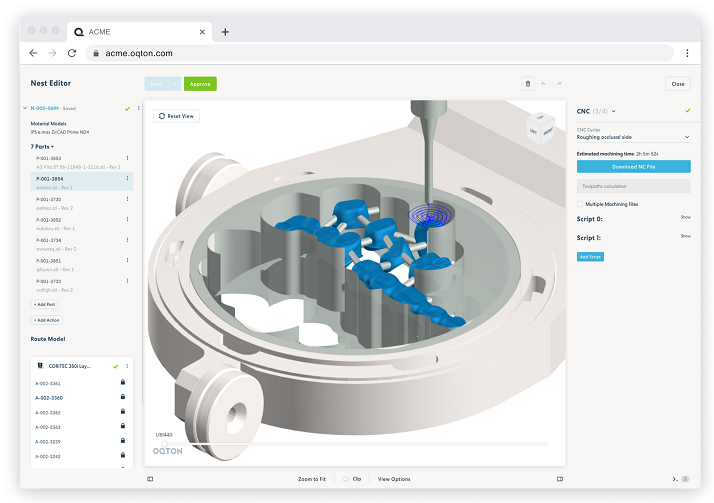AM Investment Strategies: CEOs, Analysts & Finance Experts Share Wealth of Knowledge with 3D Printing Community
Representatives from some of the industry’s most successful 3D printing businesses joined the SmarTech – Stifel AM Investment Strategies 2021 virtual summit on September 9, 2021, to talk about the 3D printing market activity and the industry’s current public and private investment environment. The first panel of the day featured Stephen Butkow, Managing Director at investment brokerage firm Stifel; Benny Buller, CEO of metal AM manufacturer VELO3D; Arno Held, Managing Director of investment firm AM Ventures; Jürgen von Hollen, CEO of 3D printer company Ultimaker; Ryan Martin, CEO of advanced manufacturing service bureau Fathom; Jeffrey Graves, CEO of pioneering AM firm 3D Systems, and Scott Dunham, Executive Vice President of Research at SmarTech.
As investors find themselves in a sweet spot to benefit from a growing 3D printing market, SmarTech and Stifel’s half-day summit brought together leading figures to discuss where the industry is heading, especially with so many venture and private equity investments, M&A’s and 3D printing companies getting in on the SPAC (short for special purpose acquisition companies) boom, an alternative way for businesses to go public that differs from a standard initial public offering (IPO) which has become extremely popular in the last two years but is currently undergoing increased scrutiny from securities regulators.

VELO3D’s manufacturing facility in Campbell, California where final assembly and test takes place for all Sapphire 3D metal printers. Image courtesy of VELO3D.
SmarTech President and panel moderator Lawrence Gasman opened the discussion acknowledging the current climate surrounding investments in 3D printing technology and how the whole industry is maturing and moving in new directions. Front and center this year is the SPAC ecosystem. In this panel alone, two companies had recently announced they were going public. After finalizing its SPAC merger deal with blank check company JAWS Spitfire Acquisition, Buller’s VELO3D will begin trading on the New York Stock Exchange (NYSE) sometime in the latter half of 2021. While advanced manufacturing service provider Fathom also announced, it will go public on the same exchange, following a multi-million dollar deal with blank-check firm Altimar Acquisition Corp. II.
While discussing the deal and upcoming debut on the NYSE, Martin said he is confident that Fathom will become a “very strong public company” because it already has both scale and profitability today, so it already provides a value proposition to investors. “When we’re working with large corporate customers, they want to know the viability of the company, the benefits, and the long-term runway related to it. So I think [the SPAC deal to go public] is a tool to be able to add further investment and grow much faster, to be able to take on the demand and the tailwinds that this industry has behind it.”

Fathom Manufacturing CEO Ryan Martin at the company’s headquarters in Hartland. Image courtesy of Fathom Manufacturing.
Although SPAC merger deals have been highly publicized in the last two years, becoming a huge trend, the 3D printing industry is a broad landscape, with startups choosing to remain private and others opting to walk the traditional IPO route. No matter what they decide, one thing is for sure, the financial experts in this panel see investments thriving in the 3D printing sector like never before.
With an emphasis on bridging the gap between 3D printing startups and investors, Held explained how the venture scene focused on niche investments in early-stage industrial 3D printing startups. The venture capital (VC) entrepreneur and former EOS Business Development Manager said AM Ventures’ database already has roughly 2,500 startups.
“We scouted about 200 startups in 2019, 220 in 2020, and just this year alone –up until July– we exceeded 500 startups scouted in the industrial 3D printing space. In 2021, half of the startups that we scouted were focused on applications, so this is a very encouraging sign that industrial 3D printing is becoming a very viable manufacturing technology, and people are starting to realize what they can do with it,” described Held. The expert also highlighted that when he started with AM Ventures the segment’s landscape was highly fragmented. Now, however, the entire market is “ordering” itself, which is triggering the dynamic movements we are witnessing today, making 3D printing startups highly appealing to investors.
Along those lines, Butkow stated that 3D printing is garnering a lot of attention from investors lately, especially as 3D technologies complement traditional manufacturing and are “really earning their place on the shop floor and helping companies bring products to market or ultimately produce their final products.” The expert said he sees a growth acceleration like never before in hardware, materials, software, and service bureaus.
During the event, a lot of the discussion also veered toward the technology itself and the AM ecosystem’s composition looking forward, with a focus on supply chain disruptions and integrated workflows. Moreover, three of the overarching themes here revolved around the demand for large parts, especially in metal AM; the industry’s evolution into end-use part production for polymers and metals, and how artificial intelligence (AI) can enhance the printing process. All the CEOs coincided that this is an exciting time for the industry as additive moves to scale part production and 3D businesses leverage strong supply chains to facilitate it, driving AM adoption.
Buller described how “Our manufacturing customers are not buying one system; they are buying fleets. The first system that they’re buying is a validation system on their way to buy many more. So we see a solid pattern of customers purchasing more and more platforms. This is something we have seen in the last years and will continue to accelerate next year. So fundamentally, the way we built our model and the way we are building a strategy is that we have tripled our customer base in each of the last few years, and we are tripling our customer base this year as well.” Ideally, this strategy will serve the company’s objective to increase revenues in the near future now that it is going public.
As for Ultimaker’s von Hollen, he believes 3D printing businesses are empowering customers to become quicker, flexible, and dynamic to deal with the rising volatility in the markets, whether it’s driven by politics, the pandemic, or the financial crisis from the pandemic. Seeing the 3D printing industry herding towards an applications-focused integrated workflow is the key to finding solutions for customers that truly fit into their work environment, said the CEO: “Empowering customers to change the production line quickly to develop new applications is absolutely key.”
Graves also shared some interesting insight into how AI enhances the printing process. The seasoned CEO said the next frontier is to leverage intelligent processing and apply it to AM and post-processing to get higher yields, higher throughput, and ease of use. Just hours before the summit, 3D Systems announced its acquisition software startup Oqton, a global SaaS company founded by manufacturing and artificial intelligence experts in 2017 that offers an agnostic, intelligent, cloud-based Manufacturing Operating System (MOS) platform that automates the end-to-end workflow. The new addition aligns with Graves’ goals and gives 3D Systems a manufacturing platform that can link together printers with post-processing finishing and machining operations. For Graves, the key is to go from design to a finished component and apply AI throughout the entire workflow.
Near the end of the event, Dunham also shared some insights into the current and future trends in 3D printing. Today, the analyst sees an “appetite for investment” in 3D printing that he hasn’t seen before and manufacturers that are much incentivized to get involved with 3d printing than they were before. “The outlook is very positive for 3D printing businesses based around an aggressive growth scenario with a focus on applications, which is possible thanks to technical developments that companies on this panel have made happen through their hardware, allowing a wider range of real industrial materials and production process robustness that will enable a boom in applications moving forward.”
Subscribe to Our Email Newsletter
Stay up-to-date on all the latest news from the 3D printing industry and receive information and offers from third party vendors.
You May Also Like
Further Understanding of 3D Printing Design at ADDITIV Design World
ADDITIV is back once again! This time, the virtual platform for additive manufacturing will be holding the first-ever edition of ADDITIV Design World on May 23rd from 9:00 AM –...
3D Printer Maker EVO-tech Reborn as NEVO3D — Once More With Feeling
EVO-tech was a 3D printing service and original equipment manufacturer established in 2013 and based in Schörfling am Attersee, Austria. The company produced high-quality material extrusion systems featuring linear bearings,...
3D Systems Brings 3D Printed PEEK Cranial Implant to the U.S. with FDA Clearance
For more than 10 years, 3D Systems (NYSE:DDD) has worked hand-in-hand with surgeons to plan over 150,000 patient-specific cases, and develop more than two million instruments and implants from its...
CDFAM Returns to Berlin for Second Annual Symposium
The second CDFAM Computational Design Symposium is scheduled for May 7-8, 2024, in Berlin, and will convene leading experts in computational design across all scales. Building upon the first event...

































